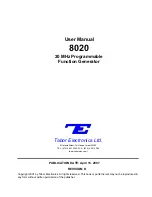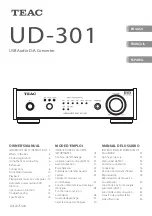
SIM02E-013
4
The approved way to mount SHARP PV modules to a support
structure is described in this INSTALLATION MANUAL.
Although SHARP does not specify or warrant frame clamps or
clips, using frame clamps (not provided) or clips (not provided)
is possible when they are designed for PV modules and with
minimum dimensions on the sides of the PV module in
accordance with the instructions and drawings provided. If using
frame clamps or clips, the PV modules should be fixed rigidly
and there shall be no damage to the PV modules by deforming
mounting structure against design load.
The SHARP PV module guaranty may be void if customer-
selected frame clamps are improper or inadequate for PV
module properties (including strength or material) or installation.
Note that if metal clamps are used, there must be a path to
ground from the clamps, (for instance, using star washers in the
clamp hardware set).Please review the descriptions and
drawings carefully; not mounting the PV modules according to
one of these methods may void your guaranty. The PV module
has passed the test sequence which contains 3 cycles each
performed at 5,400 Pa positive and 2,400 Pa negative loading
in accordance with IEC61215-2. The system designer shall be
responsible to ensure protective structures so that the module
can bear to the loads that are different from the test condition
defined in the IEC standard.
Support structures that PV modules are mounted on should be
rigid. SHARP PV modules are designed to ensure optimal
electrical performance under the condition that they are
mounted on rigid support structures. Deformation of support
structure may damage PV module with its electric performance.
When mounting the PV module on structure, ensure that no
corner has a displacement of more than 2 mm per every 1,000
mm of the diagonal.
The mounting structure shall enable the PV
module to deflect freely under wind and/or snow load not to
make direct impact to the center of the PV module.(i.e. min.10
cm from the roof surface to the bottom face of PV module frame).
The installer shall be responsible for the selection and
construction of support structure.
9. MAINTENANCE
The PV modules are designed for long life and require very little
maintenance. If the angle of the PV module is 5 degrees or
more, normal rainfall is sufficient to keep the PV module glass
surface clean under most weather conditions. If dirt build-up
becomes excessive, use only a soft, damp cloth and water to
clean the glass. If cleaning the back of the PV module is
required, take utmost care not to damage the back side
materials. In order to ensure the operation of the system, check
the connection of wiring and the state of the jacket of wires
occasionally.
The PV modules is equipped with anti-reflective coating glass,
do not touch the glass since finger prints or stains will easily
mark. If dirt build-up becomes excessive, clean the glass
surface with water only.
INSTALLATION INSTRUCTIONS -PHOTOVOLTAIC MODULES-
1. INSTALLATION
Mounting Using Clamps:
The PV modules can be mounted with clamps (clips) as defined
in the following. Note that the mounting clamps should meet the
required dimensions as defined in the Figure1. Note that the
CLAMP CENTER POSITION (e, L, S)
from the module corner
should be located in the range as specified in the Annex. All
clamps shall hold the module frame completely within their width.
Please be aware that the module under heavy load would get
serious deflection which could cause cell cracks that affects
power degradation. The PV module must be supported on the
array system and must overlap the array rail by at least 10mm.
Mounting Using Frame Bolt Holes:
The modules may be fastened to a support using the bolt holes
in the bottom of the frames at any of locations shown in Annex.
The module should be fastened with four (4) M8 bolts.
Recommended torque is 12.5 Nm.
2. ELECTRICAL INSTALLATION INSTRUCTION
Cable characteristics
Conductor size: 4.0 mm
2
, Cable type: H1Z2Z2-K or 62930
IEC131
Maximum DC voltage: 1.5 kV
Ambient temperature: -40 °C to +90 °C
Maximum conductor temperature: 120 °C
PV module configuration (Recommend)
# Maximum series configuration: please refer to Table 1
# Maximum parallel configuration: (Parallel connection of each
string shall be conducted with following two options. Any other
parallel connections are prohibited.)
a) Case of using the diodes; 1 diode per maximum 2 parallel
strings (Connect a diode or more in series for every string or
every 2 parallel strings for protection of PV module from
reverse current over load.)
b) Case of using the fuses; 1 fuse per every string (Connect a
fuse for every single string for protection of PV module from
reverse current over load.)
Connection cables requirement
The PV module shall be mated to the same connectors;
Type: MC4 (System voltage 1,000V)
Brand: Staubli Electrical Connectors
In case connectors will be replaced by qualified personnel
according the mounting instructions of the manufacturer of the
new connectors, the guarantees on the module itself, will remain
valid according the applicable terms.
3. WARNING
Keep all PV MODULES and electrical
CONNECTORS
clean
&
dry
before
installation.
4. Disposal
Dispose
PV
modules
properly.
For
Information about the proper disposal,
contact your local recycling site.
Figure1. Clamps (Clips) requirement
1) Clamp: Al alloy, 3 mm Min. thickness
2) Catch length (50 mm Min.)
3) Covering depth (7 mm Min. on the frame)
4) Supporting depth (10 mm Min.)
5) Frame (applicable to all frame sections)
6) Array rail (applicable to parallel or crossed
mounting)
























